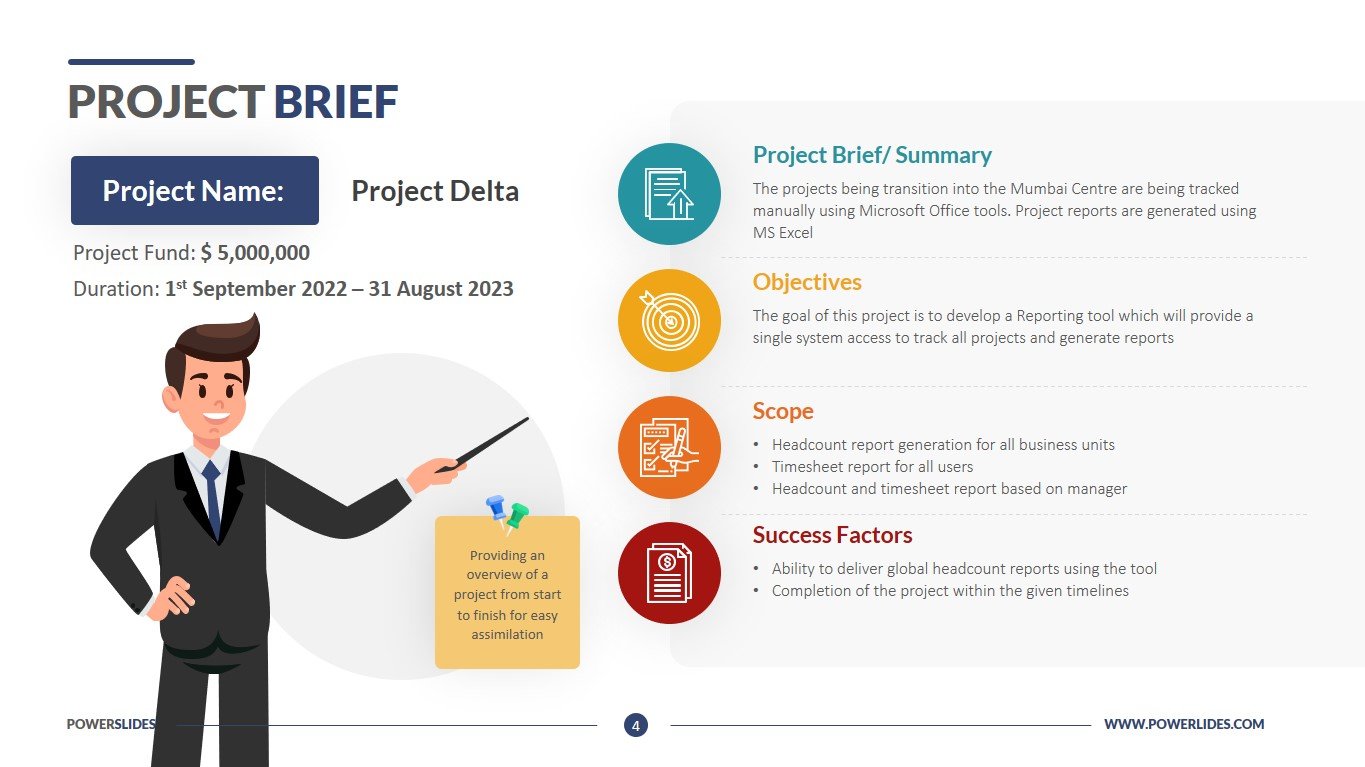The Importance Of Clear Briefs In Project Management

Table of Contents
Defining the Scope: The Foundation of a Clear Project Brief
A clear project brief begins with a meticulously defined scope. This forms the bedrock upon which the entire project is built. Without a clear scope, the project is adrift, vulnerable to misunderstandings, scope creep, and ultimately, failure.
Clearly Defined Goals and Objectives
Setting specific, measurable, achievable, relevant, and time-bound (SMART) goals is paramount. Vague goals lead to ambiguity and confusion.
- Poorly Defined Goal: "Improve website traffic." (Too vague, lacks measurability and timeframe)
- Well-Defined Goal: "Increase website traffic by 25% within the next quarter through targeted SEO optimization and social media marketing." (SMART goal: Specific, Measurable, Achievable, Relevant, Time-bound)
Aligning project goals with overall business objectives is crucial. Understanding the bigger picture ensures the project contributes meaningfully to the organization's strategic aims. Techniques like using a SWOT analysis and establishing key performance indicators (KPIs) can help define clear objectives.
Detailed Deliverables
Specifying deliverables with crystal clarity prevents scope creep and ensures everyone is on the same page. Each deliverable should be meticulously described, leaving no room for misinterpretation.
- Clear Deliverable Description: "A fully responsive website with 10 pages of content, including a blog, contact form, and e-commerce integration. The website must meet WCAG 2.1 AA accessibility guidelines."
- Using Visuals: Mockups, wireframes, and prototypes are invaluable for visualizing deliverables and ensuring everyone shares a common understanding.
- Version Control: Employing version control systems (e.g., Git) for all deliverables ensures traceability and allows for easy management of revisions and updates.
Effective Communication: Ensuring Clarity and Understanding
Clear communication is the lifeblood of any successful project. The project brief should be tailored to the specific audience and meticulously crafted to ensure everyone understands their roles and responsibilities.
Target Audience & Stakeholder Management
Identifying and managing stakeholder expectations is critical. Different stakeholders – technical teams, clients, executives – have varying levels of understanding and expectations.
- Identifying Key Stakeholders: Create a stakeholder register that lists all individuals or groups impacted by the project, including their roles, interests, and communication preferences.
- Communicating with Different Stakeholders: Tailor your communication style to suit the audience. Use technical jargon with technical teams, but avoid it with non-technical stakeholders. Regular updates are vital to manage expectations.
- Managing Stakeholder Expectations: Proactively address potential concerns and establish clear communication channels for feedback and updates. Regular meetings and progress reports will help ensure everyone is informed and on board.
Choosing the Right Communication Channels
Selecting the appropriate communication channel for disseminating the project brief is equally important. Different channels have advantages and disadvantages.
- Email: Suitable for distributing the written brief and for concise updates. Best practices include using clear subject lines, formatting for readability, and keeping emails concise.
- Meetings: Essential for initial brief discussions, clarifying ambiguities, and addressing concerns. Prepare an agenda, ensure active participation, and document key decisions.
- Project Management Software (e.g., Asana, Trello, Monday.com): Ideal for collaborative work, centralized communication, and tracking progress. These platforms offer features like task management, file sharing, and version control.
Using a Project Brief Template for Consistency and Efficiency
Using a standardized project brief template ensures consistency across all projects and streamlines the process of creating new briefs.
Essential Elements of a Project Brief Template
A robust project brief template includes:
- Project Overview: A high-level summary of the project, its purpose, and objectives.
- Goals & Objectives: Clearly defined SMART goals.
- Deliverables: A detailed list of all deliverables with clear descriptions.
- Timeline: A realistic project schedule with key milestones.
- Budget: A detailed breakdown of project costs.
- Risks & Mitigation Strategies: Identification of potential risks and plans to mitigate them.
- Stakeholder Information: A list of key stakeholders with their contact information and roles.
Regular Review and Updates
The project brief is not a static document. It should be revisited and updated regularly throughout the project lifecycle.
- Managing Changes: Establish a clear process for proposing, reviewing, and approving changes to the brief. Document all changes meticulously.
- Documenting Changes: Maintain a version history of the brief, clearly noting all revisions and the rationale behind them.
- Project Manager's Role: The project manager plays a crucial role in ensuring the accuracy and currency of the project brief.
Conclusion
Clear project briefs are not merely a formality; they are the cornerstone of successful project management. By defining scope, facilitating effective communication, and utilizing a standardized template, you can dramatically reduce the risk of project failure, improve stakeholder satisfaction, and unlock significant gains in efficiency. Adopting these best practices transforms project management from a source of stress into a well-oiled machine, driving efficiency and ensuring the successful delivery of every project.
Download our free project brief template today and start experiencing the benefits of clear project briefs in your project management strategy! Master the art of writing clear project briefs and unlock the potential for successful project delivery. [Link to Template]

Featured Posts
-
 Bangladesh Bowled Out Zimbabwe Secure First Test Victory Thanks To Muzarabani
May 23, 2025
Bangladesh Bowled Out Zimbabwe Secure First Test Victory Thanks To Muzarabani
May 23, 2025 -
 Cobra Kai Maintaining Continuity And Expanding The Karate Kid Story
May 23, 2025
Cobra Kai Maintaining Continuity And Expanding The Karate Kid Story
May 23, 2025 -
 Grand Ole Oprys Historic London Show Royal Albert Hall Broadcast Details
May 23, 2025
Grand Ole Oprys Historic London Show Royal Albert Hall Broadcast Details
May 23, 2025 -
 Englands Test Squad Dealt Fresh Injury Blow Ahead Of Zimbabwe Match
May 23, 2025
Englands Test Squad Dealt Fresh Injury Blow Ahead Of Zimbabwe Match
May 23, 2025 -
 Dan Lawrence England Test Opening Bid And Future Aspirations
May 23, 2025
Dan Lawrence England Test Opening Bid And Future Aspirations
May 23, 2025
Latest Posts
-
 A Ranked List Of The 10 Scariest Arthouse Horror Films
May 23, 2025
A Ranked List Of The 10 Scariest Arthouse Horror Films
May 23, 2025 -
 Movies To Watch Now Leaving Hulu Month Year
May 23, 2025
Movies To Watch Now Leaving Hulu Month Year
May 23, 2025 -
 The 10 Most Disturbing Arthouse Horror Movies
May 23, 2025
The 10 Most Disturbing Arthouse Horror Movies
May 23, 2025 -
 Top 10 Arthouse Horror Movies Guaranteed To Scare You
May 23, 2025
Top 10 Arthouse Horror Movies Guaranteed To Scare You
May 23, 2025 -
 Dont Miss These Movies Leaving Hulu This Month
May 23, 2025
Dont Miss These Movies Leaving Hulu This Month
May 23, 2025
